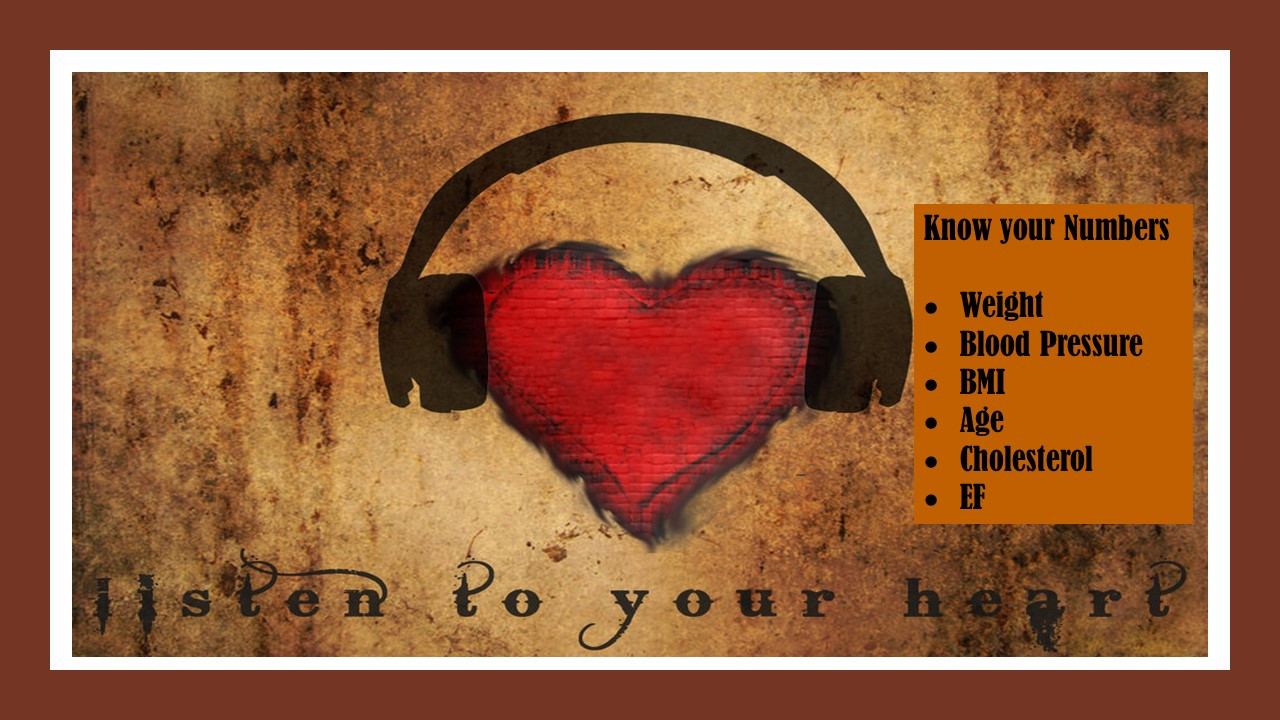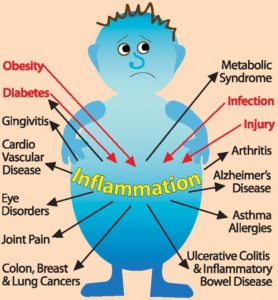
February is heart awareness. I always lead this month with “Know Your Numbers”
- Weight
- Blood Pressure
- BMI Body Mass Index
- Age
- Cholesterol. (Good and Bad) LDL and HDL
- EF Ejection Fraction
Each of the numbers by themselves are not important, but together, they tell a pretty good story. I always suggest that as you enter your 40s, have an idea of your general baseline. For example, every year when you have your physical, or if you are seen by a specialist, keep a mental note or write down your numbers in a journal. My personal journal goes back almost 10 years. (I like to be over-organized sometimes.) I use it to keep a running tab of my weight, BMI, and blood pressure.
Why should you know your numbers, especially over time? So you can catch any trending from your baseline. If your normal numbers start to move this could be a tell-tell sign of change in your health.
Your baseline shifting could be as simple as you need to lose a few pounds due to your age, or it could be a sign of something more.
For the month of February, we will focus on heart disease.
Keywords
Cardiovascular Disease = While cardiovascular disease can refer to different heart or blood vessel problems, the term is often used to mean damage to your heart or blood vessels by atherosclerosis (ath-ur-o-skluh-ROE-sis), a buildup of fatty plaques in your arteries. Plaque buildup thickens and stiffens artery walls, which can inhibit blood flow through your arteries to your organs and tissues. Mayo Clinic Overview
Atherosclerosis is also the most common cause of cardiovascular disease. It can be caused by correctable problems, such as an unhealthy diet, lack of exercise, being overweight, and smoking.
Heart Attack = A blood clot blocking the blood flow through an artery that feeds the heart, which possibly damages or destroys part of the heart muscle. Atherosclerosis can cause a heart attack.
Heart Failure = One of the most common complications of heart disease, heart failure occurs when your heart can’t pump enough blood to meet your body’s needs. Heart failure can result from many forms of heart disease, including heart defects, cardiovascular disease, valvular heart disease, heart infections, or cardiomyopathy
Arrhythmia = An abnormal heart rhythm/beat. It may feel like fluttering or a brief pause. It may be so brief that it doesn’t change your overall heart rate (the number of times per minute that your heartbeats). Or it can cause the heart rate to be too slow or too fast. Some arrhythmia’s don’t cause any symptoms, while others can make you feel lightheaded or dizzy.
There are two basic kinds of arrhythmias. Bradycardia is when the heart rate is too slow — less than 60 beats per minute. Tachycardia is when the heart rate is too fast — more than 100 beats per minute. What is an Arrhythmia
Sudden Cardiac Arrest = Is the sudden, unexpected loss of heart functions, breathing, and consciousness, often caused by an arrhythmia. Sudden cardiac arrest is a medical emergency. If not treated immediately, it is fatal, resulting in sudden cardiac death.
EF = Ejection Fraction, or EF, is a measurement that indicates how well your heart is functioning. This number tracks how much blood your heart is pumping out during each contraction.
Your ejection fraction is described as a percentage. If you’re healthy, your EF is generally between 55% and 70%. For instance, an EF of 60% means your heart is pumping 60% of your blood out of your left ventricle (the left ventricle, LV, is the main pumping chamber) every time your heartbeats.
Understanding the terms and your numbers will help you keep your heart healthy in the long run.
During the month of February, grab someone and ask them if they know their numbers. Maybe even help them start a journal.
Stay Inspired,
Shonda



